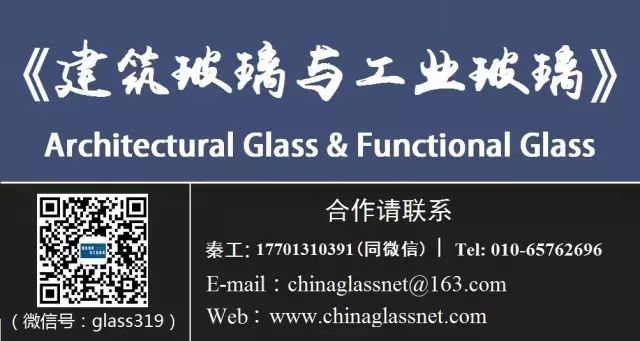With the continuous development of the times and the ongoing progress of science and technology, people are increasingly concerned about improving social production efficiency. In order to meet the demands for increased production efficiency and quality, this study analyzes the practical application of industrial robots in industrial production, conducting a detailed analysis and research on the application of robots in glass processing equipment production. It aims to meet actual production needs and achieve specific production goals. Through the design of industrial robot control systems and practical application analysis, we hope to further understand and master the design principles of industrial robots, continuously optimizing and upgrading the production efficiency of industrial robots in future work.
1 Overview of Industrial Robot Control and Application Status
Robots used in industrial production have complex control characteristics, involving numerous kinematics, vectors, coordinate transformations, matrices, and calculus operations, along with nonlinear multivariable coupling situations. Solutions must be optimized and decisively considered for practical control work. Controlling in a fixed-point manner requires mastering the precision of positioning while also understanding the time scope of kinematics applications. By employing continuous trajectory calculation methods, we can track trajectories and assess the stability of robot operations. The robots primarily used in industrial production belong to either servo or non-servo control types, with the main goal of scientific management to avoid closed control loops and situations in actual work. Currently, the application of robots in industrial production is quite common, but there are still variances in specific work quality and effects that need to be addressed through scientific design and practical applications to achieve upgrades in robot work quality and efficiency.
2 Construction of Robot Kinematics Equations
Robots capable of participating in industrial production possess a high level of scientific and technological content and can meet relatively high functional application demands. The actual design and production work encompasses many design concepts and requirements. To meet the demand for robots to engage in industrial production, attention should be paid to the coordination requirements of software and hardware during the initial design phase to ensure actual production work needs are met. Therefore, it is necessary to construct equation models based on the kinematic concepts of robots to satisfy actual production work requirements. Analyzing from the perspective of robot kinematics, establishing kinematic equation models requires understanding the construction needs of the D-H coordinate system, setting parameters for each joint position of the robot within the D-H system, and then drafting kinematic equations under the confirmed parameter categories to ensure that correct data results are obtained from the kinematic equations. Furthermore, obtaining the inverse solution results of the equations allows for the calculation and demonstration of the overall kinematic equations and ultimately the construction of the equation system.
3 Setting Up the Hardware Platform for the Control System
When industrial robots participate in specific industrial production and processing tasks, hardware and software settings for the control system need to be established. The hardware setup is crucial as it serves as the design center for the robot’s involvement in processing and industrial production work, supporting the design framework of robots used in industrial applications. Therefore, attention should be paid to the importance of hardware platform setup. First, an overall control scheme and system design for robots used in industrial production should be proposed, with scientific plans for strict design management to ensure the working efficiency of the hardware platform. Secondly, interventions for hardware platform setups within the robot’s working system need to meet actual control system application requirements, providing control boards for motion modes to satisfy the actual selection needs for production and processing work. Additionally, control management of robot production and processing can be accomplished through servo drivers, further meeting the variable demands of robots participating in industrial production, and selecting servo-type drivers during the actual production and processing work process.
4 Setting Up the Software Framework for the Control System
The setup of the software framework within the control system plays a significant role and provides value for managing and applying industrial robots, meeting actual industrial production needs and effectively applying to the work of glass processing equipment. This study focuses on the details of the software framework setup for robot control systems, hoping to achieve quality supervision and management requirements for specific work.
5 Setting Up Functional Module Programs for the Control System
To fully apply robots in glass industrial processing equipment and manage the actual system control, it is necessary to establish functional settings for the control system in the preliminary work, creating a module storage program to adjust the specific work functions of robots to meet actual industrial production needs. To establish a functional module program, the first step is to set up an information reading module within the robot operating program to ensure that the industrial robot understands and masters the tasks it should complete at the start of production. Secondly, a zeroing control template should be set in the robot’s operating process to accurately record complex and redundant information in the robot’s information reading template, allowing the robot’s working mode to return to a zero-based state, thereby ensuring the robot can revert to its initial working state, reducing potential errors during work. Furthermore, an automatic operation template should be established for the robot’s operating program, designed primarily to accomplish detailed production and processing tasks manually. Integrated production information may lead to poor effects in specific detailed processing and production, while manual operation enhances processing and production quality and allows for manual production control in case of robot failures. Additionally, an automatic operation template for the robot should be set up to manage the robot’s production and processing movements within the function design system. Moreover, the overall production and processing flow can be controlled through the design of automatic control circuits, improving the quality of production work. Finally, to meet actual production work demands, design parameters, teaching, and trajectory templates for industrial robots should be established to better grasp the effectiveness of robots participating in industrial production.
6 Application of Industrial Robots in Glass Processing Equipment
Recognizing the tremendous convenience that scientific and technological development brings to industrial production, employing technological means can meet the actual product quality and production efficiency demands of industrial production and provide good safety guarantees for labor personnel in industrial production. This study conducts in-depth research and analysis on the application of industrial robots in glass processing equipment during actual work, hoping to achieve quality management for specific tasks in future work processes.
First, an analysis of the specific application of robots should be conducted to establish a control program system for robots and make specific adjustments and debugging of robot functions during the actual work process to ensure that robots achieve good production effects in the industrial production of glass processing, upgrading the quality of glass products while meeting the production efficiency upgrade demands posed by the market economy.
Second, attention should be paid to the application of industrial robots during the operation of glass edging machines, exploring scientific and effective methods for robot application through practical work. Establishing a robot handling inspection system, attempting to analyze the safety of robots in transporting glass products, and achieving application demands in future work. Then, attempting to run robots to transport glass on the glass processing production platform to further realize the goal of robots replacing manual labor. Through practical work, it can be found that industrial robots can utilize suction to move glass from its original position and safely deliver it to designated locations, achieving the goal of assisting industrial production, enhancing production efficiency, reducing manual labor intensity, and improving production safety.
Furthermore, during the glass processing production work, robots need to be involved in more detailed work environments, allowing robots to participate in the automated feeding work of glass edging machines. To verify the quality and safety of robots participating in this work, an experimental platform needs to be established. During the specific work process on the experimental platform, parameter settings should be conducted to discover that specific suction work path settings yield teaching results, summarizing experiences and lessons from suction experiments, and applying scientific methods for adjustments in future work to ensure smooth progress in future work and further improve the actual quality and effects of industrial production.
7 Conclusion
Through comprehensive and effective analysis, discussion, and summarization of the above research content, it can be found that applying advanced robot working modes in industrial production can enhance the actual work efficiency and quality of industrial production, while also reducing the intensity of manual labor, significantly decreasing the risks associated with personnel work, enhancing awareness of safe production, and protecting workers while driving the overall economic benefits of industrial production. This study, through research and exploration of industrial robot control systems, has achieved analysis and exploration of the application of robots in glass processing equipment.
(Source: “China Equipment Engineering” Li Meng)




